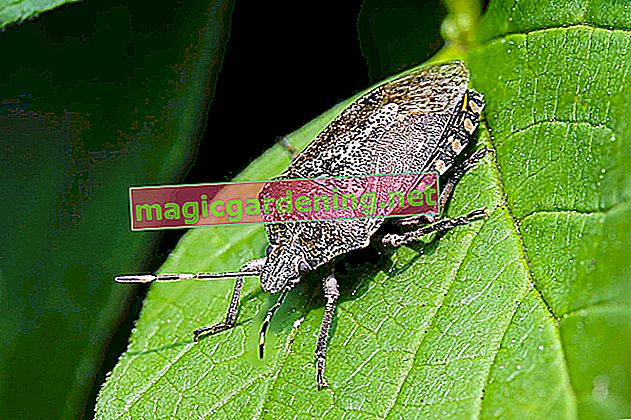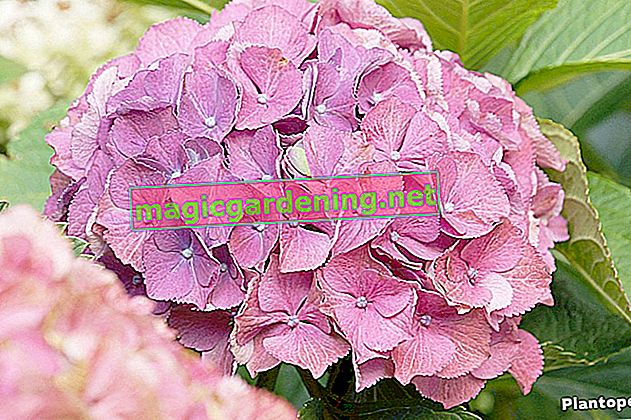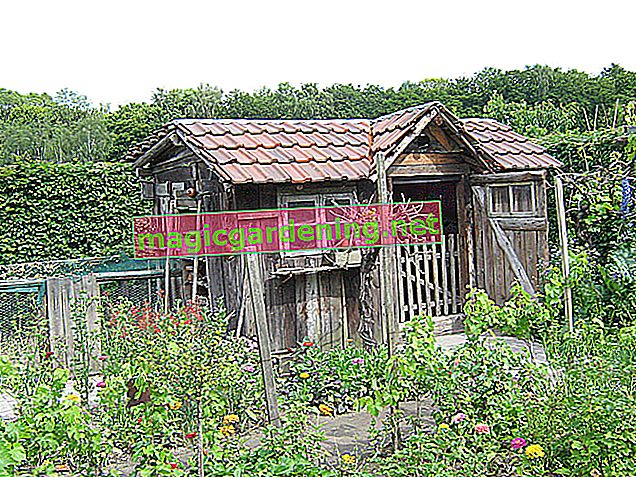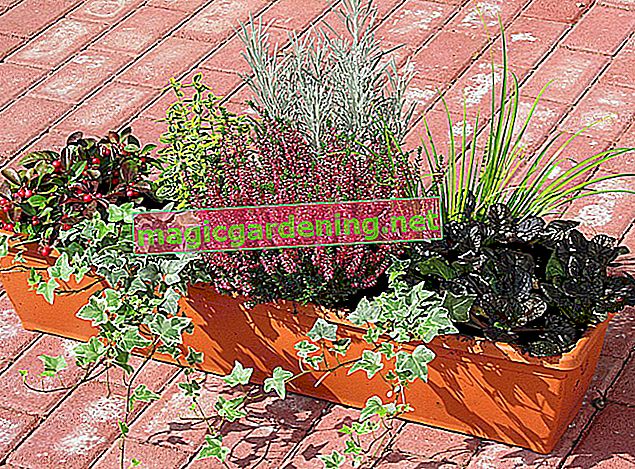
Care tips
The professional care of lobelia is based on a balanced water and nutrient balance as well as a cut at the right time. How to do it right:
- Water in summer drought, possibly in the morning and evening
- Do not water overhead, but pour onto the roots with the nozzle
- From May on, fertilize liquid every 2 weeks
- Clean up withered flowers or cut off the entire pile by a third after the first flowering
also read
- How does the wintering of lobelia work?
- Lobelia is sure to like this location!
- Lobelia: Few of them are hardy
If you keep one of the rare herbaceous lobelia, it will be given winter protection on leaves, straw, brushwood or garden fleece. In mild locations, the experiment can succeed in guiding the South African beauties safely through the cold season.
Continue reading
Which location is suitable?
The lobelia found their way into our gardens from the sun-drenched regions of South Africa. So that they feel at home here, the beauties prefer a sunny, warm location without blazing sun at noon. While short men, loyal to the stature, do not mind one or the other gust of wind, we recommend a sheltered location for towering lobelia species.
Continue reading
The correct planting distance
The planting distance varies depending on the selected lobelia species and variety. Arrange men up to 20 cm tall with a distance of 10 to 12 cm. For medium-sized lobelia up to 60 cm in height, we recommend a planting distance of 30 cm. Majestic herbaceous lobelia with a height of up to 90 cm, thrive excellently at a distance of 45 cm.
What soil does the plant need?
In order to stage their summer spectacle perfectly, lobelia only require normal garden soil. The soil should be fresh and moist, rich in humus and nutrients. Excellent permeability is of the greatest relevance, as the curtain falls on the garden stage when waterlogging occurs. For bucket culture, we recommend good quality potting soil, the permeability of which is optimized with sand or lava granulate (€ 10.95 at Amazon *).
What is the best time to plant?
Since the majority of lobelia cannot tolerate frost, we recommend planting from mid-May. If you put the beauties you bought or bought ready in the bed after the ice saints, belated ground frosts can no longer cause problems.
When is the flowering time?
The flowering period of lobelia extends all through summer into autumn. The flower spectacle opens in June and ends in September / October. So that the flowers do not run out of breath over this long period of time, the first flower pile is cut off to make space for a lush second bloom.
Cut lobelia properly
If you cut the lobelia back by a third after the first act of your summer guest performance in the garden and put a little compost with horn shavings (€ 6.39 on Amazon *) at the roots, the blooms will take off again. In this way, the flowering period is extended well into autumn. Annual varieties are then dug up and disposed of. Cut the herbaceous lobelia close to the ground in late winter.
Pour the lobelia
Lobelia are thirsty fellows. The sun worshipers evaporate abundant moisture through their opulent flowers and the innumerable leaves. You should therefore water the flowers regularly as soon as the soil has dried. This may be necessary every day in the pot on the balcony. Ideally, the water from the spout reaches the roots directly.
Fertilize lobelia properly
From May to September the lobelia is happy about a portion of compost with horn shavings once a month. Since the incorporation of organic solid fertilizer causes unrest in the bed, nettle or comfrey manure can be considered as a sensible alternative. If the flower thrives in the planter, a commercially available liquid fertilizer meets all the requirements for a balanced supply of nutrients.
Overwinter
Audience favorites among the lobelia, such as loyal to men, spray their floral charm for a summer. At the end of the flowering period, the plants are quickly disposed of. For perennial lobelia in regions with mild winter there is at least the chance of a revival next year. Don't prune these flowers back in the fall just yet. Cover the plants in the bed with a 20 to 30 cm layer of leaves, compost and coniferous branches. In the pot or window box, the flowers move to a bright, frost-free winter quarters before winter. Watered from time to time and not fertilized, the overwintered lobelia move to the garden or balcony in May at the earliest.
Continue reading
Increase lobelia
Annual lobelia, like Männertreu, can be easily reproduced by sowing them on the windowsill. At the end of February / beginning of March, sow the light germs and keep them constantly moist at 18 to 20 degrees Celsius. Seedlings with two healthy pairs of leaves are pricked into individual pots, where they develop their own root system and are planted out by mid-May. You pick up herbaceous lobelia in autumn, cut the root ball and insert the segments at the new location. Under the protection of a thick layer of leaves, the sections will turn into vital young plants by the next year.
Lobelia in the pot
Lobelia have made a name for themselves as picturesque underplanting in large tubs or as the main character in balcony boxes. For cultivation to be successful, the following criteria are important in care:
- Above the water drainage, pottery shards prevent harmful waterlogging as drainage
- Common compost-based potted plant soil can be used as a substrate
- Water the lobelia in the pot regularly, in summer morning and evening if necessary
- Apply liquid fertilizer every 14 days from May to September
- Cut off dead flowers by a third for a magnificent second bloom
Annual varieties are disposed of in the fall. You put herbaceous lobelia in the light, frost-free winter quarters, where they are watered every now and then.
Is Lobelia Poisonous?
Several toxic ingredients flow through lobelia. Due to the high content of lobeline, a nicotine-like alkaloid, the flowers pose a health risk for humans and animals. In the family garden, a location out of the reach of children and pets is therefore advisable.
Nice varieties
- Compliment: Magnificent herbaceous lobelia for mild winter locations with deep red flowers in summer; Growth height 60-70 cm
- Fan scarlet: unmistakable summer flower with scarlet red flowers and the potential to become a perennial; Height 50-60 cm
- Kathleen Maillard: Bright blue lobelia with double flowers and up to 80 cm long shoots; ideal for the traffic light
- Blue selection: enchanting herbaceous lobelia with bright white flowers until autumn; Height 50-60 cm
- Faithful to men: Popular annual lobelia with dainty, blue flowers and a small growth; Height 10-25 cm








